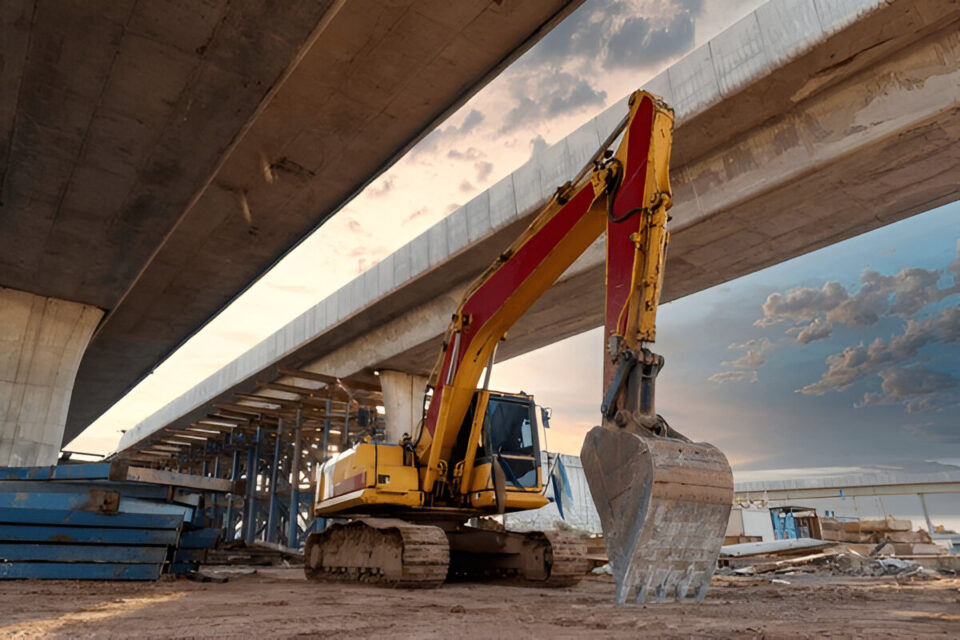It has always been hard to construct bridges, but how we design and build them is rapidly evolving. Instead of simply relying on force and lifting, tools now focus on being smart, accurate and flexible. Since projects must be completed quickly, workplaces need to be safer and pollution must be reduced, the equipment working on heavy tasks is getting smarter, cleaner and more effective. These trends are real and they are transforming the process of planning, building and upkeeping bridges.
Table of Contents
Smart Machinery: Integrating AI & Automation
Sites now rely on intelligent heavy equipment rather than waiting for it to be the future. Modern machines have automated features that direct the alignment, influence the lift speeds and improve the way tasks are arranged. The use of AI helps operators make quick choices and the system can even step in to stop accidents and misalignments. The operator is still in charge, but the automated system helps by reducing errors and tiredness. If equipment recognizes what it’s carrying, how far to move it and the environment, both safety and good results are assured.
Modular & Prefabrication-Friendly Equipment
Because of modular construction, bridge construction equipment at project sites has been transformed. Modern cranes and casting beds are now being used instead of or along with traditional equipment that requires work to be done on site. It is now common to use equipment for lifting, aligning, and placing pre-assembled large parts. This allows for faster completion and less disruption where many people travel or reside. Not only does it mean working faster, but also working smarter so that workers and machines are not overloaded.
Eco-Conscious Equipment Choices
Being environmentally responsible is now expected instead of being optional. Many manufacturers are now making electric-powered or hybrid machines to replace diesel-only ones and these are starting to show up in bridge construction fleets. Besides helping the environment, they are less noisy and more efficient in areas where noise matters. Even machines that use diesel fuel are being updated to follow stricter requirements about fuel usage and emissions. Using environmentally friendly technology in bridge construction is rewarded with incentives and is something people now expect from government projects.
Compact and Multi-Functional Machines
Building a bridge often takes place in places where space is limited and the ground is not always easy to predict. This situation has caused a rise in the use of small, versatile machines that can handle different tasks. Machines that lift, rotate, stabilize and help with assembly can be used instead of several single-use machines. It takes up less space on crowded job sites and also makes operations more efficient, cutting costs for transport and maintenance. Contractors require greater flexibility but still need control and manufacturers are answering by designing smarter and smaller products.
Digital Monitoring & Telematics Integration
Because of telematics systems, construction machines are now connected and produce valuable data. New bridge-building equipment often contains digital sensors, GPS and tools to monitor loads, sending info back to those in charge in real time. They enable better control of how weight is managed, when things happen and even allow maintenance to be planned ahead. With cloud-connected dashboards, teams can keep an eye on equipment and its use at several sites which decreases downtime and helps spot mechanical problems early. For projects that take a long time to construct, being able to foresee risks is very helpful.
Safety-Driven Innovations
Safety is always very important in bridge construction and this is evident in new equipment trends. Machines are being built with features like auto-shut down, anti-collision and better operator views to ensure safety from the very start. Technology such as smart cameras, sensor arrays and wearables that work with equipment systems keeps work environments safer for employees. They lessen the risk of accidents, make everyone more responsible and make construction sites match current safety rules. Being safe used to mean just having a reliable crew, but today it means the equipment must be safe too.
The Role of Operator Comfort and Ergonomics
One more trend that is often not noticed is the extra work being done to make machines less difficult to handle. The layouts of new cabins include greater visibility, soundproofing and easy-to-use interfaces. It goes beyond mere comfort as it helps operators stay energized for a long shift and react properly when the machine changes in a subtle way. Some gadgets now come with customizable options, adjustable seats and helpful features that help you maintain your attention and correct posture throughout long shifts. When the machine helps the operator, rather than hinders them, productivity automatically increases.
Overview
One more trend that is often not noticed is the extra work being done to make machines less difficult to handle. The layouts of new cabins include greater visibility, soundproofing and easy-to-use interfaces. It goes beyond mere comfort as it helps operators stay energized for a long shift and react properly when the machine changes in a subtle way. Some gadgets now come with customizable options, adjustable seats and helpful features that help you maintain your attention and correct posture throughout long shifts. When the machine helps the operator, rather than hinders them, productivity automatically increases.

